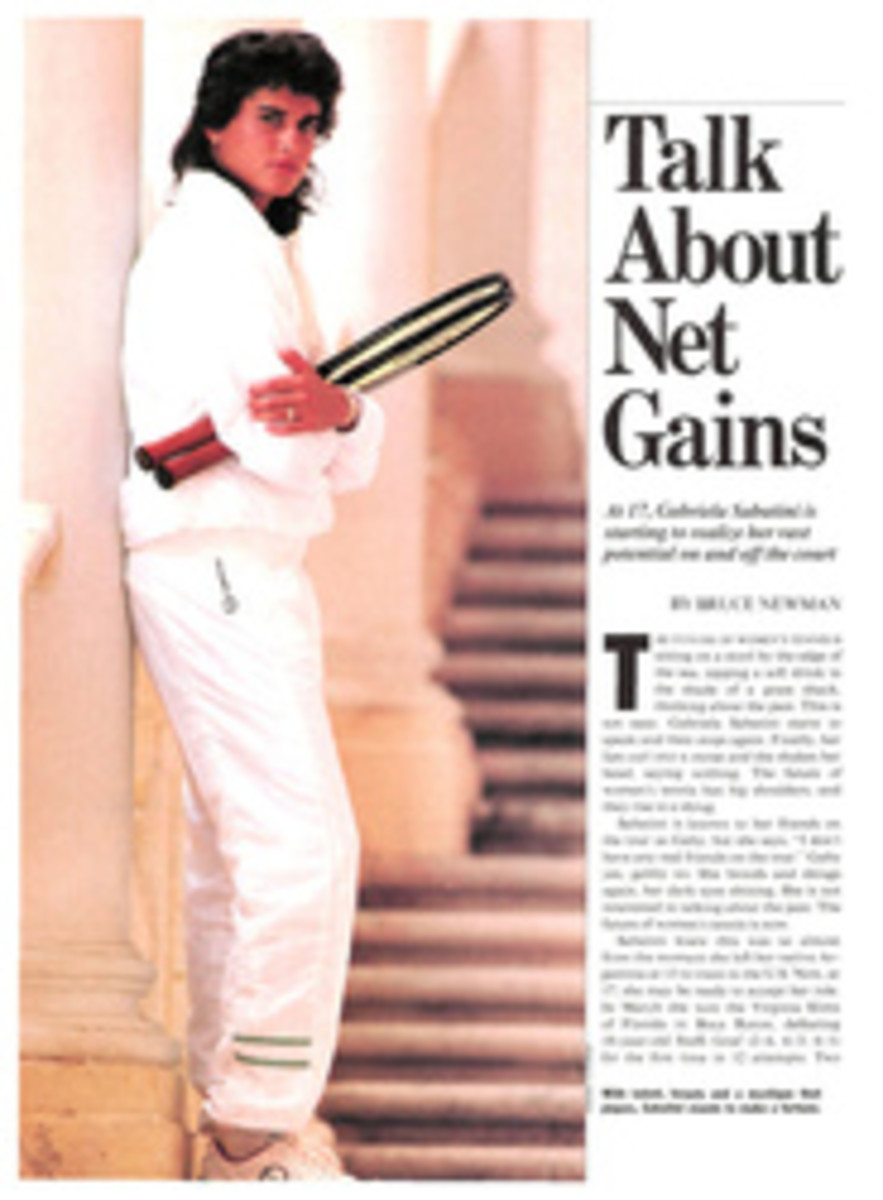
A SHOT IN THE PARK FOR THE TWEEDY SET
The shooting of clay targets, as carried out under the rules of the U.S. Sporting Clays Association, is no more difficult for the beginner than playing golf—at night, while standing on one leg. This became apparent to me at a sporting clays competition held last fall at the Mashomack Fish and Game Preserve in Pine Plains, N.Y., 80 miles north of Manhattan.
On a chilly, sunny morning made to order for photographing people wearing tweeds, a group of people wearing tweeds gathered at Mashomack for the first Glenlivet Sporting Clays Challenge. The Challenge owes its existence to the USSCA, which likes the sport, and to the British-American Chamber of Commerce, which likes helping the U.S. raise its trade deficit. Five-gun teams from the likes of the House of Lords, Range Rover, the Mashomack Club and the USSCA went in armed pursuit of 500 targets, 100 per shooter.
"A perfect score in today's competition is 100 [per shooter]," proclaimed the event program.
"There have been, I think, less than a dozen perfect scores in the history of the sport," said Bob Davis, a gregarious Texas oilman who serves as president and board chairman of the USSCA.
To a casual gunner who enjoys an occasional round of skeet but has never killed a bird in the pursuit of sport, this news sounded ominous. For good reason, as it turned out. Firing in fourth position for the Range Rover team, I learned that a man carrying a loaded shotgun can suffer more humiliation than you would ever believe.
Sporting clays shooting originated in Great Britain shortly after the turn of the century. From the outset the sport has tried to simulate situations encountered by bird hunters. Shooters sharpen their aim by firing at clay targets hurled by mechanical or manual traps devilishly concealed in natural surroundings. The clay targets fly or skitter suddenly into view, in imitation of the movements of such fauna as doves, rabbits, pheasants, ducks or geese, and the shooters fire at them. Occasionally, some are hit.
On most sporting clays courses, a team of shooters will walk through 10 different stands. The targets are issued in pairs, five pairs to the stand. Once a shooter shouts "Pull," the person in charge of the targets has from one to three seconds to release the targets. This gives the shooter time to worry about what's coming, which is part of the training: The goal is to learn to point and shoot virtually by instinct.
The targets are released in one of several ways: typically as two singles, which requires a second shouted "Pull"; as a report pair, in which the second target is released at the sound of the first shot; as a following pair, meaning that the second target follows the first after a brief interval; or as two simultaneous targets.
The day's first two targets established the tone. Standing in the designated enclosure, I got set to shoot what the program called "Wigeon—From behind—Pair." With the butt of my Browning tucked in my armpit—one of the ready positions required by the rules—I called for the target.
"Louder, sir," said the stand's scorer. "The target puller can't hear you." I turned up the volume and called "Pull!" again.
I looked for the target, tried to remember to get the butt of my gun into my shoulder to avoid recoil bruises, and prayed. And waited. Nothing happened.
"Pull!" I shouted again.
"Uh, he already did, sir," said the scorer, as the puller released two new targets.
The first two targets had risen from well behind me and gone straight out for perhaps 30 yards before falling, successfully using the light tree cover in front of me to avoid being hit. I never saw them. I did glimpse one of the second pair, as I fired twice, and on the remaining three pulls I saw all six targets.
And I missed every damn one of them.
This competition would show each of us 50 pairs, no singles. Using 12-gauge over-and-under or side-by-side shotguns, we blammed away at the clays—which are made from pitch and limestone or clay, and which resemble four-inch black Frisbees.
In the United States, sporting clays has only recently risen from obscurity. Because it involves shooting with live ammunition and requires at least 40 acres of land, sporting clays hardly threatens to become a mainstream sport. But in its modest way it is joining skeet shooting and trap-shooting as an activity to sharpen one's gunning skills and as a competitive event in its own right. More than 80 courses now exist in the U.S., up from only one three years ago.
The sporting clays crowd emphasizes its relative exclusivity by dressing the part. Trapshooters and skeet shooters can often be seen in baseball caps and cutoffs, depending on the season, but sporting clays shooters do their best to emulate the upscale down-dressing of British gentry. USSCA president Davis showed up in a tweed suit, knickers and heavy brogues. Only his soft Texas accent prevented his being taken for a member of the British gentry.
In the case of the Mashomack shoot, many of its members were British gentry, and looked it. Swathed in tweed and loden, and wearing ties, vests, knee-high green rubber Wellingtons, and heavily waxed parkas, they marched from station to station hooting things like "Well shot, sir" and on the occasion of a particularly well-dusted brace of clays, "Very well shot, sir."
Mashomack's 10 stands ranged from simple to diabolical. At stand No. 1, a clay target went bounding along the ground, in an excellent imitation of a flushed rabbit moving at full hop. The instant I fired, a second target zoomed up to my left. It was said to represent a rising pheasant, but it might as well have been a rising Exocet.
Other stands held variations of crossing targets, the clays either moving from right to left, left to right, or coming from both directions. The frequent presence of trees between me and my targets added to the difficulty, and the results would have set Joyce Kilmer to sobbing. All of this, infuriating as it may be, will ultimately make you a better bird hunter, even if you aren't really a bird hunter.
"That's the good thing about sporting clays," said singer John Denver, shooting for the USSCA team. "You don't kill anything."
"Hell, some of us don't even hit anything," said Charles Hughes, one of my teammates. I chose not to enter this conversation.
Sporting clays differs from skeet or trapshooting in that its practitioners have been known to smile during their competitions, while skeet shooters and trapshooters approach their sport with the hard-eyed air of a tax auditor.
In sporting clays, the atmosphere is that of a coed softball team. Shooters will shout encouragement to each other and do their best to stay relaxed. My team finished dead last but relaxed, well behind the winning Mashomack team; its top scorer, Gary Herman, hit 82.
I broke a miserable 26 targets and was grateful for those. But we never lost our sense of humor. After I hit 7 of 10 targets on the final stand, my best show of a long, long morning, I heard Bill Baker, another teammate, say, "I think somebody else has William's clothes on."
PHOTO
HUMPHREY SUTTON
It was "Steady on, old bean," as Hughes, the writer's teammate, prepared for his target.
PHOTO
BILL BAKER
The sporting clays crowd has no trouble with dressing for success.
William Jeanes lives in Grosse Point, Mich., and is the editor of "Car and Driver."

